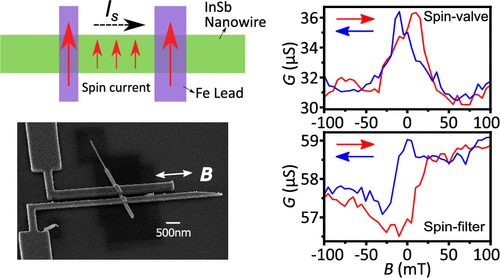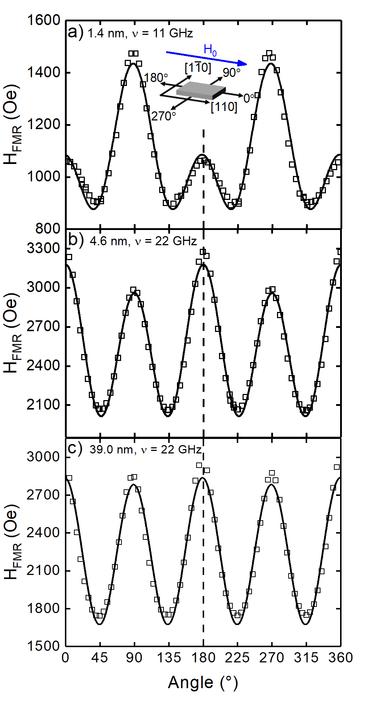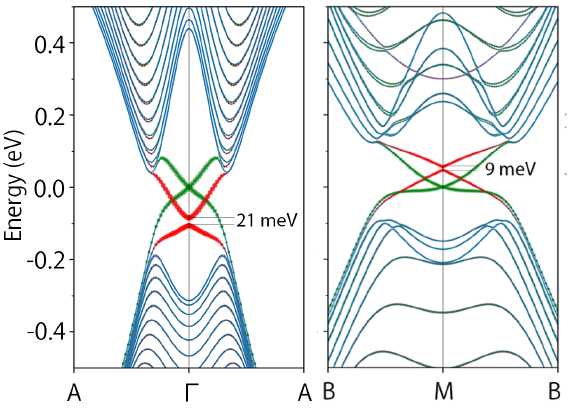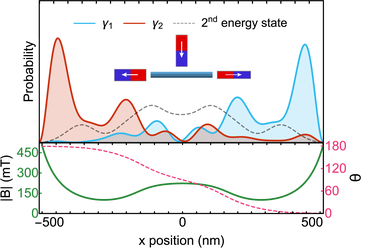Pribiag group
The Pribiag group's research applies innovative nanofabrication and low-temperature measurement techniques to uncover the electronic properties of new low-dimensional material systems. Our work is driven both by the potential to uncover fundamental properties of quantum materials and by the desire to develop quantum devices with emergent physical properties that could enable future computing paradigms. Our emphasis is on 2D and 1D materials that host topological states of matter or exhibit unusual spin and superconducting properties. Some of these materials are particularly promising for the development of future computing and communication technologies that will embrace the laws of quantum mechanics to overcome the limitations of what is possible within the existing (“classical”) paradigm.
One area of interest in this context is topological superconductivity, a fascinating condensed matter phase that is predicted to host Majorana zero-modes. When attached to a local defect such as a domain wall, Majorana modes, unlike conventional fermions, are expected to show non-Abelian exchange statistics. Because of their exotic properties and their topological robustness, Majoranas have become very important in the nascent field of topological quantum computing, which aims to exploit topological protection for decoherence-free quantum information processing. We have further interest in low-dimensional semiconductors with strong spin-orbit coupling, which open up avenues for exploring novel spin physics. For example, the spin orientation can be coupled to the electron propagation direction by applying a magnetic field along the nanowire. We are interested in the intriguing possibility of using such spin-helical modes as spin filters or to couple single spins from separate quantum dots.

Nano Lett. 2020, 20, 5, 3232-3239
Crowell group
The Crowell group focuses on spin dynamics and transport in ferromagnets and ferromagnet-semiconductor heterostructures. The first project examines the role of non-equilibrium effects in spin transport in hybrid ferromagnet/semiconductor structures. The materials development for this work is carried out in collaboration with Chris Palmstrøm's group at UCSB. In recent years, we have succeeded in fabricating simple devices that can be used to test theories of spin transport across interfaces as well as of spin dynamics in the presence of spin-orbit and hyperfine interactions. Similar questions, particularly about the role of interfaces, appear in studies of spin transport in all-metallic heterostructures. We are also working on integrating highly polarized materials into heterostructures with strong spin-orbit coupling.

(manuscript in preparation)
Marom group
The Marom group combines quantum mechanical simulations with machine learning and optimization algorithms to computationally design materials with desired properties for various applications.
Through the portal of computer simulations we gain access to the vast configuration space of materials structure and composition. We can explore the uncharted territories of materials that have not been synthesized yet and predict their properties from first principles, based solely on the knowledge of their elemental composition and the laws of quantum mechanics. Since the Schrödinger equation can be solved exactly only for very small systems (=the hydrogen atom), we employ approximate methods within the framework of density functional theory (DFT) and many-body perturbation theory (MBPT) to apply quantum mechanics to systems, such as molecular crystals and interfaces, with up to several hundred atoms. The computational cost of quantum mechanical simulations increases rapidly with the accuracy of the method, the size of the system, and the number of trial structures sampled, therefore we run our calculations on some of the world's most powerful supercomputers.
To navigate the configuration space and identify the most promising candidates, we use optimization algorithms. For example, genetic algorithms are guided to the most promising regions by the evolutionary principle of survival of the fittest. Machine learning (ML) uses statistical models based on "training data" to make predictions for new data points. We employ ML to accelerate predictions for materials properties and unveil hidden correlations in data generated by our simulations. We apply several types of ML algorithms for different purposes, such as optimization, classification, clustering, feature selection, sampling, and finding structure-property correlations. ML algorithms are integrated with quantum mechanical simulations in fully automated complex workflows.

Phys. Rev. Materials, 4 034203 (2020)
Frolov group
Frolov group is integrating semiconductor nanostructures (VLS-grown nanowires and selective area-grown nano-networks) with micromagnetic gate electrodes and superconducting contacts. The goal is to leverage dipolar coupling from micromagnets to induce spin-resolved quantum states in nanowires. At the same time, by inducing superconductivity these states will be subjected to Cooper pair (spin singlet) correlations. The interplay of spin polarization and superconductivity is expected to yield interesting regimes that may manifest exotic superconductivity, including topological with Majorana modes, but not limited to it. The structures can be explored for QIS technologies such as superconducting spin qubits, topological quantum computing and in superconducting spintronics, for instance to generate Josephson pi-junctions. The advantage of using micromagnets is that their careful design can be used to generate local magnetic field patterns, for instance where magnetic fields can turn to follow the direction of the nano-network.

Palmstrøm group
The study of novel materials and structures allows us to explore interesting physics and to form the basis for making new devices. A fundamental understanding of growth is critical to the advancement of materials and structures. In order to develop structures with novel properties, it is essential to control the interface structure and chemistry at the atomic level. Our group has a strong emphasis on heteroepitaxial growth of dissimilar materials via molecular beam epitaxy (MBE). These include materials with different crystal structures, bonding, and electronic, magnetic, optical and topological properties.
